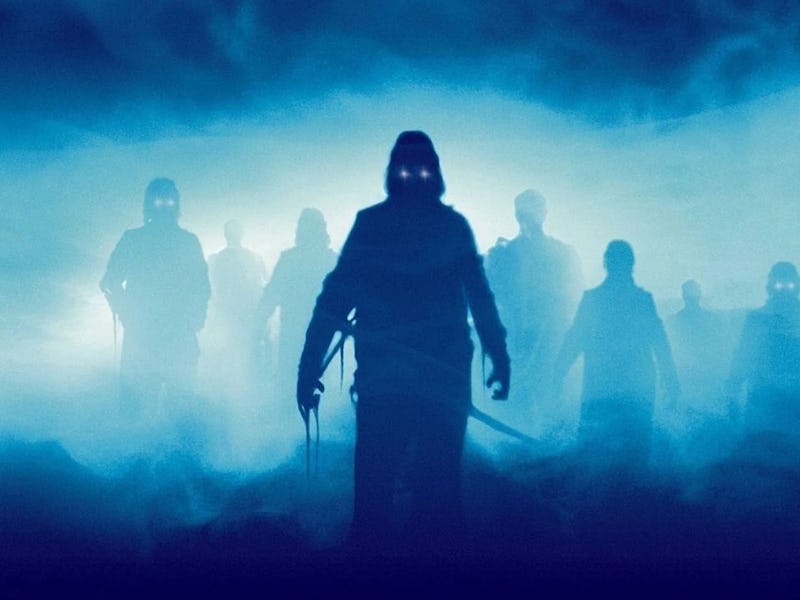John Carpenter’s Most Overlooked Thriller Can Still Chill Your Bones
Be careful out there.

There’s a remarkable timeliness to many John Carpenter films, especially those he made during the late ‘70s and early ‘80s. Assault on Precinct 13 captured the era’s economic malaise and social uproar. Halloween created a blueprint for the modern slasher flick while cutting deep into latent suburban paranoia. Escape from New York felt like a much-needed cynical antidote to the Reagan administration, and The Thing quite literally warped the idea of the leading man and the masculine collective. And then there’s 1980’s The Fog, which is structured not like a troubling reflection of modern turmoil, but as a traditional ghost story.
If you dig a little deeper into its themes, however, you’ll find that The Fog isn’t an outlier in Carpenter’s filmography. It fits rather neatly into his wider output, diving into the fact that American soil is layered with blood and that any shameful historical cover-ups will inevitably (and likely violently) be torn aside.
Taking place in a coastal Northern California town, The Fog opens with a direct reference to its apparent genre: a campfire tale. According to legend, a ship sank nearby after mistaking a campfire for the glow of a lighthouse. Soon, a local priest discovers that his ancestors actually caused the shipwreck on purpose. The ship had been meant to create a leper colony near the town, so the town’s six founders caused it to crash and stole the gold aboard. And so, as the fog rolls into town, so do the ghosts of the doomed ship’s crew, vengefully craving six lives.
It’s obvious from the onset that The Fog has an undeniable atmosphere and a terrific cast. Carpenter himself has been very public about his initial dissatisfaction with the final product, feeling that it’s barely scary at all. He’s right — compared to something like The Thing, which balances suspense and a bonanza of gore like few films in history, The Fog’s array of ghosts feels a little shopworn. But it makes up for it with pure mood and the kind of tingling fear one might’ve found in classic 1950s EC horror comics. Add in the fact that it stars names like Hal Holbrook, Jamie Lee Curtis, her mother Janet Leigh, Tom Atkins, and Adrienne Barbeau, and it’s no wonder it gained a cult following.
And there are echoes, like howls in the night, of Carpenter’s film aiming for something much more culturally relevant. Like the Mayor in Jaws, who demands that the beaches stay open for July 4th even as a giant shark munches on swimmers, the local official in The Fog pays little mind to any warnings of supernatural catastrophe. It’s happening on the day of the town’s centennial celebration, after all, something built on the intertwined foundation of capital and mythic exceptionalism. It’s a day to be proud of an achievement we were all but destined for. Those sailors? Poor souls that never stood a chance. And what can be done about it now?
Visually, The Fog certainly lives up to its name.
The Fog has never gotten its flowers in the same way Jaws has, with the latter recognized for its visceral, open-water thrills and its, if you will, biting commentary. But Carpenter’s film is arguably even more unforgiving of a system that would try to hide its transgressions. The priest who reveals the century-old cover-up attempts to sacrifice himself to save others from the ghosts, and rather than end the film with a victory in his nobility, he has his head unceremoniously chopped off. Blood for blood. There is no room for retroactive mercy.
The Fog is rarely regarded as one of Carpenter’s masterpieces. It’s had its fair share of retrospectives in the 45 years since its release, but the reappraisals are rarely as glowing as the ones you’ll find for films like Big Trouble in Little China and They Live. But even if it’s not as immediately effective as Halloween or The Thing, The Fog deserves attention for the filmmaking prowess involved and how it fits into what became the defining theme of Carpenter’s career: the decomposition of the American dream.
The Fog offers little in the way of forgiveness for our forefathers’ sins. Instead, it tells us that history is full of ghosts, many of which would seek retribution if they could. The stories we tell ourselves about the past are merely the result of a few too many cloudless days: it’s only when the fog arrives that things truly become clear.